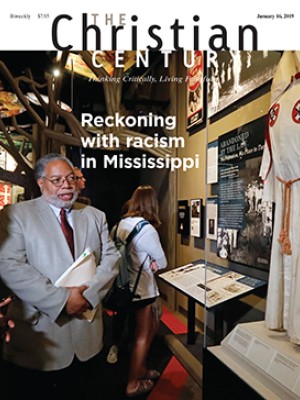Tibetan Buddhists consider who will lead them after present Dalai Lama
The Dalai Lama has said in recent years that he may not reincarnate.
Tibetan Buddhist monks from around the world are gearing up to discuss whether the 83-year-old Dalai Lama should reincarnate when he dies—and, if he does, then how to prevent China’s government from claiming that it will choose Tibet’s next spiritual leader.
Tibetan Buddhists believe that karma directs a person’s reincarnation, but those who have achieved enlightenment can direct their own path, choosing the body of their rebirth. Interpretation of ancient Buddhist texts allows monks to recognize the reincarnated body of a leader.
Read our latest issue or browse back issues.
The Dalai Lama has in recent years mentioned that perhaps he would not reincarnate.
“There is no guarantee that some stupid Dalai Lama won’t come next, who will disgrace himself or herself,” the Dalai Lama told the BBC in 2014. “That would be very sad. So, much better that a centuries-old tradition should cease at the time of a quite-popular Dalai Lama.”
Speaking to media in Japan recently, the Dalai Lama suggested that succession through nomination, instead of reincarnation, could be a way to continue his office, saying, “Sooner or later, we should start that kind of practice.”
The 14th Dalai Lama has been the face of Tibet’s nonviolent struggle against China, which in the 1950s seized the region and killed tens of thousands of Tibetans who resisted communist rule. The Dalai Lama and his followers have lived in exile since 1959 in Dharamshala, India.
China created the Tibet Autonomous Region as part of an agreement between Tibetan representatives and Beijing, but Tibetans say they have little autonomy.
In a departure from 369 years of tradition, in 2011 the Dalai Lama relinquished all political power to the Central Tibetan Administration, a democratic institution with a parliament and president. The move came four years after China’s atheist government decreed that all reincarnations of living Buddhas have to be approved by Beijing given that Tibet is officially part of China. Its leaders designate the Dalai Lama and his followers as terrorists or separatists.
China will likely try to name its own Dalai Lama regardless, as Beijing asserts that the seat of Tibetan Buddhism should be inside Tibet. In the 1990s, the Dalai Lama recognized a six-year-old boy as the Panchen Lama, the second-most-revered position in Tibetan Buddhism. Shortly thereafter, the boy and his family disappeared in Chinese custody and their whereabouts remain unknown. Then China declared a new Panchen Lama.
Tibetans would prefer to end the office of the Dalai Lama rather than have a China-appointed spiritual leader.
“We have this belief that he will come back,” said Lobsang Sangay, president of the Tibetan administration. “So we will never be without him, you see?”
The administration has been busy lately amending laws, apparently to prepare for an interim period until he is identified, if not for a post–Dalai Lama era.
“It’s difficult for us to imagine Tibet without him,” said Namdol Lhagyari, the youngest member of Tibet’s exiled parliament. “We also have to be realistic. We have to make sure all our energy goes toward the Central Tibetan Administration because this is the only institution that we have which is able to challenge the Chinese government.”
The current Dalai Lama cannot be replaced, but that is the case “in every freedom movement,” she said. “India never had another Gandhi, South Africa never had another Nelson Mandela, but the movement had new leaders. It’s important that we look out for another strong personality that could come out from the democratic movement.”
Tenzin Lekshay, deputy director at the think tank Tibet Policy Institute, also suggested that Tibetans should prepare for a possible post–Dalai Lama era, or an interim period, with wisdom and a sense of responsibility. Tibetans should keep in mind the history of the transitory periods that occurred over the past few hundred years, he said.
“In the absence of His Holiness the Dalai Lama, one of the viable alternatives to maintain stability within the Tibetan community is to develop a collective leadership,” he said. —Religion News Service
A version of this article appears in the print edition under the title “People: Dalai Lama.”






